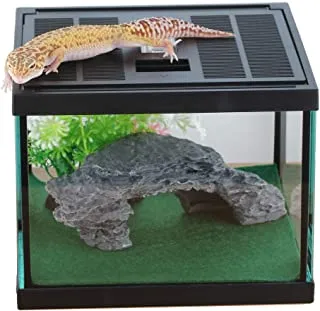Why You Need the Best Tarantula Enclosure
Choosing the best tarantula enclosure is crucial for the health, safety, and overall well-being of your pet tarantula. A proper enclosure replicates the spider’s natural habitat, providing the necessary environmental conditions for survival and promoting natural behaviors. It’s more than just a cage; it’s a carefully designed living space that contributes significantly to the longevity and happiness of your eight-legged friend. An inadequate enclosure can lead to various health problems, including difficulties in molting, stress, and even death. The correct enclosure helps maintain the right temperature, humidity, and ventilation, all of which are vital for your tarantula’s health. Additionally, a well-chosen enclosure offers security, preventing escapes and protecting your pet from potential dangers in your home. Providing the best possible environment is a responsible way to own and care for a tarantula.
Choosing the Right Size Enclosure for Your Tarantula
The size of the tarantula enclosure is one of the most important factors to consider, as it directly affects your pet’s comfort and well-being. An enclosure that’s too small can restrict movement and growth, causing stress. Conversely, an enclosure that’s too large can make it difficult for a young tarantula to find its food, leading to stress and potential health issues. The rule of thumb is to provide an enclosure that’s at least three times the tarantula’s leg span in width for terrestrial species. Arboreal species, which are tree-dwelling, require more vertical space, with the height of the enclosure being more important than the width. When your tarantula grows, you’ll need to upgrade the enclosure accordingly. Consider the adult size of your tarantula when choosing the initial enclosure to avoid frequent changes. This ensures your tarantula has ample space to move, hunt, and behave naturally throughout its life, which contributes to its health and happiness.
Consider Your Tarantula Species
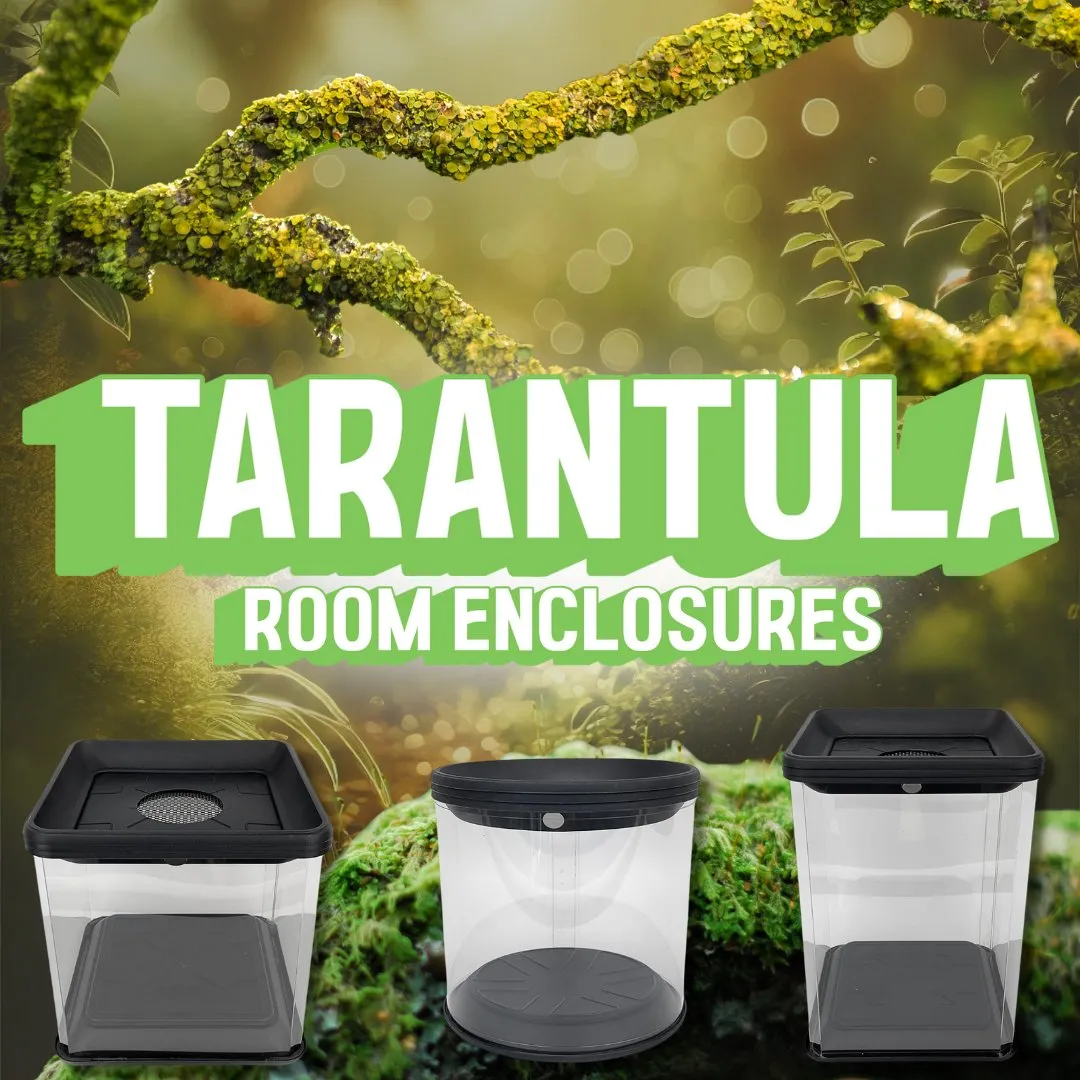
Different tarantula species have different needs, so understanding the specific requirements of your tarantula is essential for selecting the best enclosure. Some tarantulas are terrestrial, meaning they live on the ground, while others are arboreal, dwelling in trees, and some are semi-arboreal, combining both lifestyles. This distinction greatly influences the type of enclosure you need. Terrestrial tarantulas, for example, need a larger floor area for foraging and burrowing, while arboreal tarantulas require height to climb and create webs. Semi-arboreal tarantulas need a combination of both. Researching your specific tarantula species will provide insights into its preferred habitat, including the appropriate substrate, humidity levels, and temperature requirements. This information is vital in creating a suitable enclosure that mimics its natural environment, which will help to reduce stress and foster natural behaviors. The following sections explore some common species-specific enclosure considerations.
Terrestrial Tarantulas
Terrestrial tarantulas, like the popular Mexican Red Knee or the Chilean Rose, thrive in enclosures designed to replicate their ground-dwelling habitat. These tarantulas require a larger floor area for roaming and establishing burrows. The enclosure should be wider than it is tall, providing ample space for movement. A deep layer of substrate is crucial for these species, allowing them to burrow and feel secure. This substrate should retain moisture to maintain the appropriate humidity levels. Good ventilation is also essential, preventing the buildup of harmful bacteria and ensuring fresh air circulation. Decorations such as cork bark or other hides should be included to provide hiding places, mimicking the natural environments where terrestrial tarantulas feel safe and secure. Make sure the enclosure is escape-proof, as these species are often fast and agile.
Arboreal Tarantulas
Arboreal tarantulas, such as the Pinktoe or the Greenbottle Blue, are adapted to living in trees, so their enclosures must be designed with this in mind. These species require a taller enclosure that provides vertical climbing space. The height should be several times the tarantula’s leg span, allowing them to move freely and create webs. Provide branches, cork bark, or other climbing materials to mimic their natural arboreal habitat. Good ventilation is essential to prevent moisture buildup, which can be detrimental to arboreal tarantulas. While the floor space is less important than the vertical space, it should still be sufficient for the tarantula to move around. Arboreal enclosures often benefit from a slightly higher humidity level than those of terrestrial species. Regularly misting the enclosure and providing a water dish are important for maintaining proper humidity. Security is also a key factor, as arboreal tarantulas are skilled climbers and escape artists.
Semi-Arboreal Tarantulas
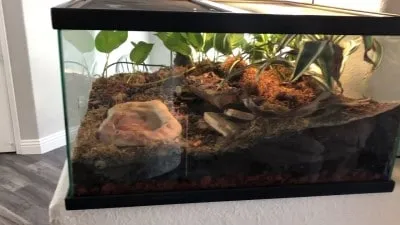
Semi-arboreal tarantulas, such as certain species of the genus Psalmopoeus, combine the habits of both terrestrial and arboreal spiders, requiring a habitat that provides a blend of both. These tarantulas need an enclosure that offers both floor space and vertical climbing options. A moderate height with a relatively wider floor area works best. The enclosure should include a deep substrate layer for burrowing, as well as branches, cork bark, or other climbing materials. Adequate ventilation and a water dish are essential for maintaining proper humidity levels. Providing a combination of hiding places on the ground and in higher areas helps them feel secure and allows for a variety of natural behaviors. Since semi-arboreal tarantulas tend to move between the ground and higher structures, a well-designed enclosure supports both lifestyles.
Top 5 Best Tarantula Enclosure Picks
Selecting the right enclosure can be a daunting task, so here are five top picks designed to meet various needs, considering factors like ease of maintenance, species suitability, and overall build quality. These enclosures have been selected based on their design features, customer reviews, and suitability for different tarantula species. Remember to consider your specific pet’s requirements when choosing an enclosure.
Enclosure Pick 1
This enclosure is ideal for terrestrial species and is designed with simplicity and functionality in mind. It features a secure lid with ample ventilation and a clear viewing area for easy observation of your tarantula. The design often incorporates a deep substrate area, which is crucial for burrowing tarantulas, allowing them to create secure habitats. The material is usually durable and easy to clean, making maintenance straightforward. Ventilation is strategically placed to ensure good airflow while maintaining appropriate humidity levels. These enclosures are often made from clear plastic or glass, allowing for easy observation of the tarantula’s activities. The overall design focuses on creating a safe and functional environment that is also aesthetically pleasing.
Enclosure Pick 2
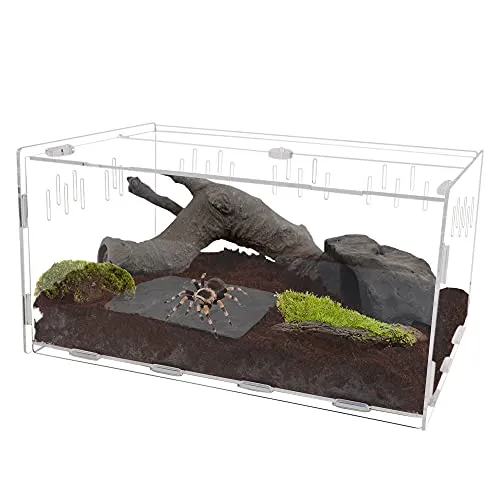
Perfect for arboreal tarantulas, this enclosure offers a tall, vertical design to accommodate their climbing habits. It typically includes features such as secure, top-opening doors and multiple ventilation points to ensure fresh air circulation. The enclosure is usually equipped with internal structures like branches or cork bark to give arboreal tarantulas plenty of climbing and webbing opportunities. The secure lid prevents escapes, while clear viewing panels allow for easy monitoring. Some models also include a built-in substrate layer and a water dish to help maintain the ideal humidity levels. These enclosures prioritize height, ventilation, and secure construction to provide arboreal tarantulas with an environment that mirrors their natural habitat.
Enclosure Pick 3
This enclosure is designed for a blend of both terrestrial and arboreal needs, perfectly suited for semi-arboreal species. It combines features from both types of enclosures, providing ample floor space for burrowing and climbing structures like branches and cork bark. This type of enclosure typically features a well-ventilated design, which is important for maintaining suitable humidity levels. The secure lid prevents escapes, and the clear panels offer easy viewing of your tarantula’s activities. The key focus is to balance both the vertical and horizontal dimensions to create a versatile environment for a variety of tarantula species, accommodating a range of behaviors. This versatile enclosure is great if you are unsure of the specific needs of your tarantula.
Enclosure Pick 4
These enclosures prioritize ease of maintenance, making them a great choice for beginners. They often have features that simplify cleaning and provide easy access for feeding and watering. Secure lids and good ventilation are standard features, and the materials used are usually durable and easy to clean. The design includes fewer complex features and focuses on the core requirements of keeping a tarantula, providing a safe and manageable environment. They often include convenient features like pre-drilled holes for accessories, making setup and upkeep simple. Easy access and cleaning features save time and effort, while ensuring a healthy habitat for the tarantula.
Enclosure Pick 5
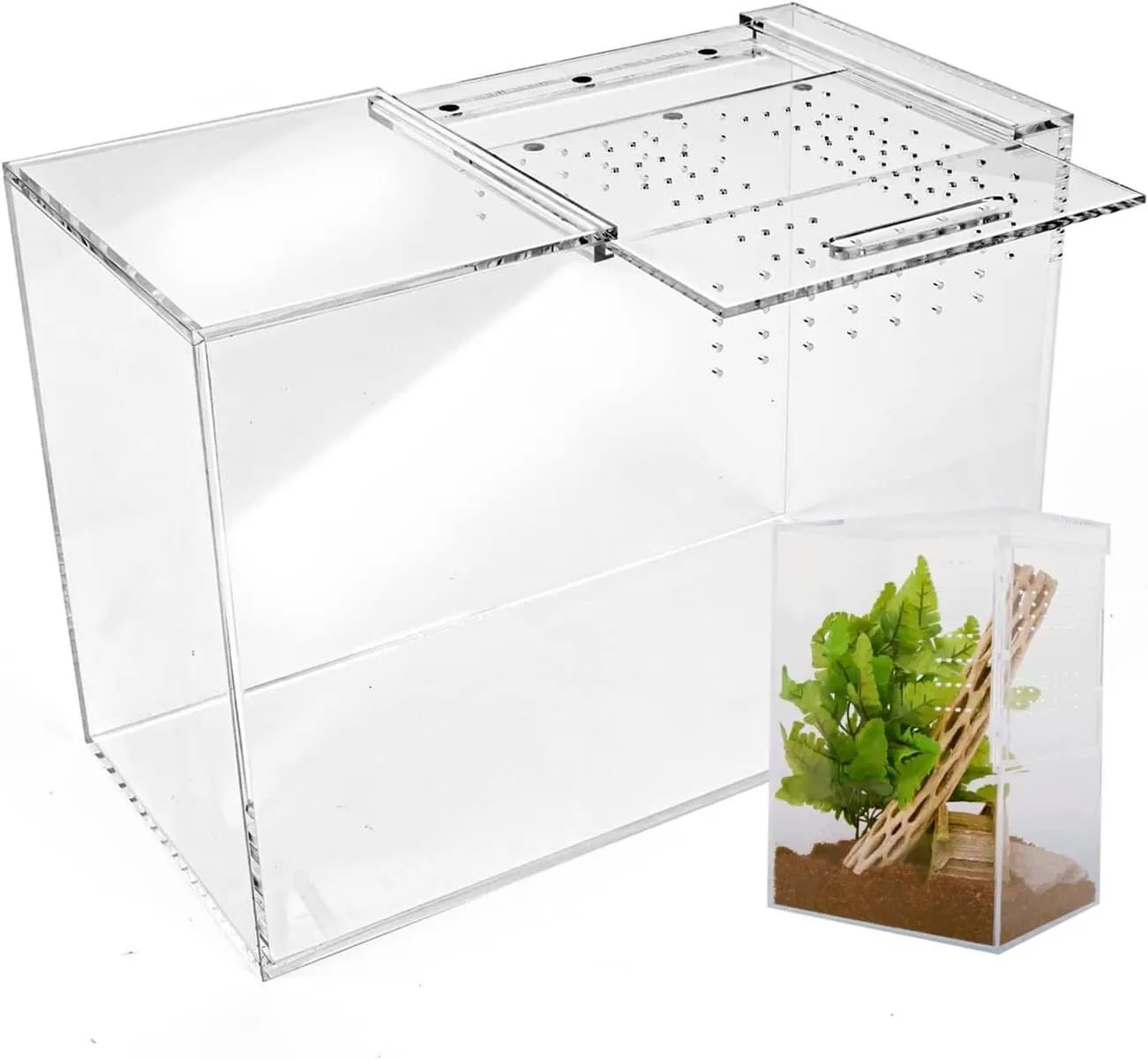
These enclosures blend aesthetics and functionality. They offer a visually appealing design while providing all the necessary features for a healthy tarantula habitat. They often feature stylish designs and materials, such as glass or acrylic, to create a pleasing look in your home. These enclosures prioritize a balance of aesthetics and functionality. The design often includes enhanced ventilation systems to ensure proper airflow and humidity control. Secure lids and easily accessible feeding and cleaning areas make maintenance straightforward. While aesthetics are a priority, these enclosures never compromise on the fundamental needs of the tarantula, providing a stylish and safe environment.
Additional Considerations for Your Tarantula Enclosure
Beyond the basics, several additional factors will ensure your tarantula has a comfortable and enriching environment. These elements are crucial for creating a complete and enriching habitat, contributing to the spider’s overall health and well-being. They include substrate selection, the use of hides and decorations, and proper water and feeding practices. Paying attention to these details enhances the enclosure’s functionality and aesthetic appeal, creating a safe and engaging space for your tarantula.
Substrate Selection
The substrate is the bedding material that forms the base of your tarantula’s enclosure, and the right choice is crucial for maintaining the correct humidity levels, providing a suitable environment for burrowing (if applicable), and promoting your tarantula’s overall well-being. Common substrate options include coconut fiber (coco coir), peat moss, vermiculite, and a mix of these materials. Coconut fiber is a popular choice, as it retains moisture well and resists mold growth, making it ideal for maintaining humidity. Peat moss is another option that provides good moisture retention, but it may require more frequent monitoring to prevent mold. The substrate layer should be deep enough to allow for burrowing behavior in terrestrial species and should be kept clean and free of waste. It’s essential to replace the substrate periodically to prevent the buildup of bacteria and maintain a healthy environment for your tarantula.
Hides and Decorations
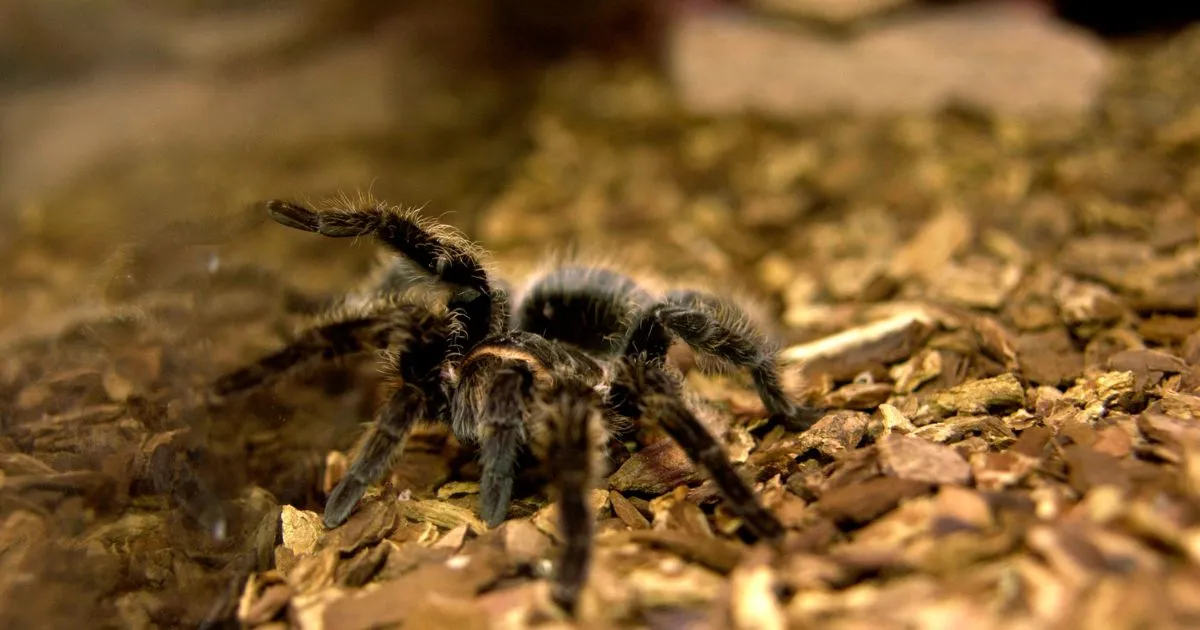
Providing hides and decorations is essential for creating a stimulating and secure environment for your tarantula. Hides provide a place for your tarantula to retreat and feel safe, reducing stress and promoting natural behaviors. Suitable hide options include cork bark, half logs, or commercially available tarantula hides. These structures should be appropriately sized for your tarantula, allowing it to fully fit inside. Decorations such as artificial plants, rocks (ensure they are stable and do not pose a risk of injury), and other non-toxic items can add visual interest to the enclosure and provide additional hiding spots. When selecting decorations, consider the tarantula’s species and its natural habitat. Avoid sharp or abrasive objects that could potentially harm your tarantula. Clean and safe decorations contribute to a better living experience.
Water and Feeding
Proper water and feeding are fundamental to the care of your tarantula and are directly influenced by the design and setup of the enclosure. Providing a water source is crucial for hydration, and this can be achieved through a shallow water dish or by misting the enclosure walls. The water dish should be shallow enough to prevent the tarantula from drowning, particularly for younger specimens. Regularly check the water dish and refill it with fresh, clean water. Feeding your tarantula an appropriate diet of insects, such as crickets, roaches, or mealworms, is also essential. The size of the prey should be appropriate for the tarantula’s size. Remove uneaten prey after a day or two to prevent stress and potential injury to your tarantula. Providing a varied diet and monitoring your tarantula’s feeding habits are critical to maintaining its health and well-being.
Frequently Asked Questions about Tarantula Enclosures
Owning a tarantula comes with a lot of questions, and here are a few frequently asked questions to help you in your journey. Understanding common concerns and having reliable answers can greatly enhance your ability to care for your pet tarantula. Here are some of the most asked questions related to enclosure setup and maintenance.
